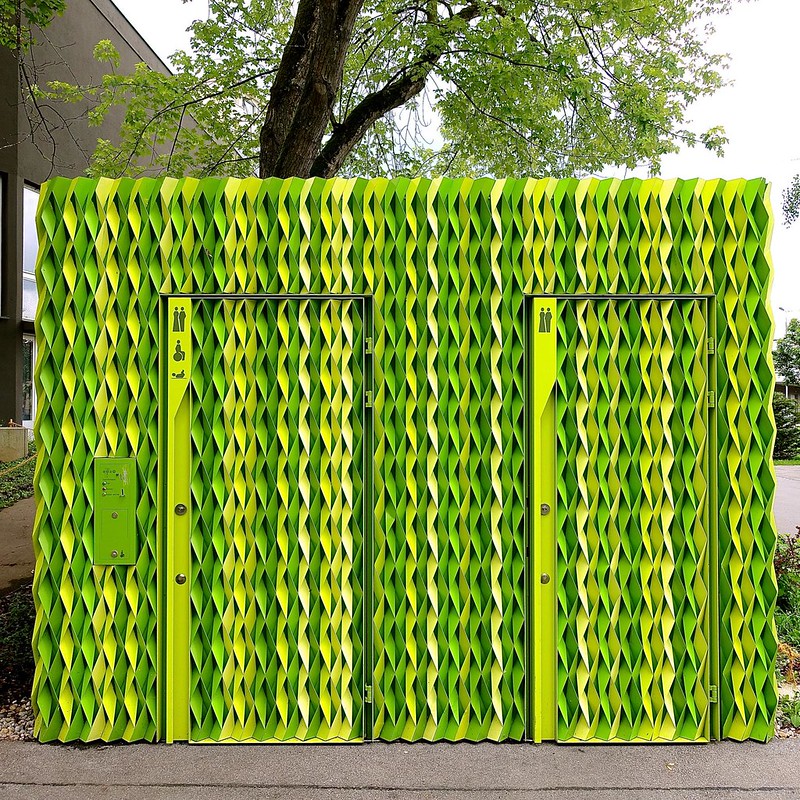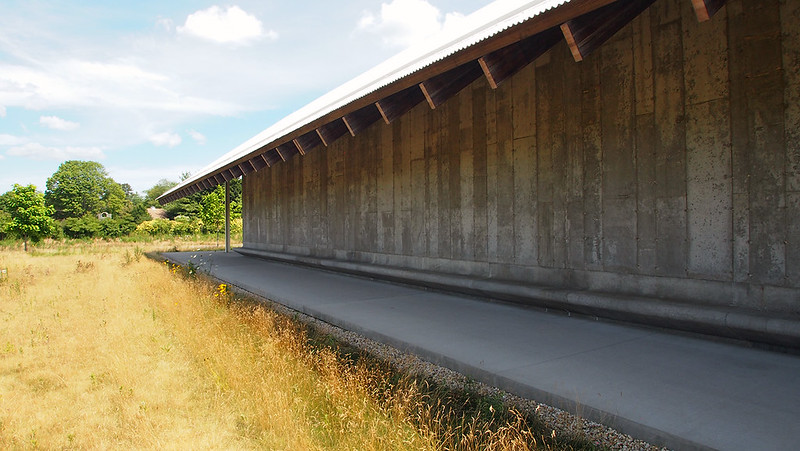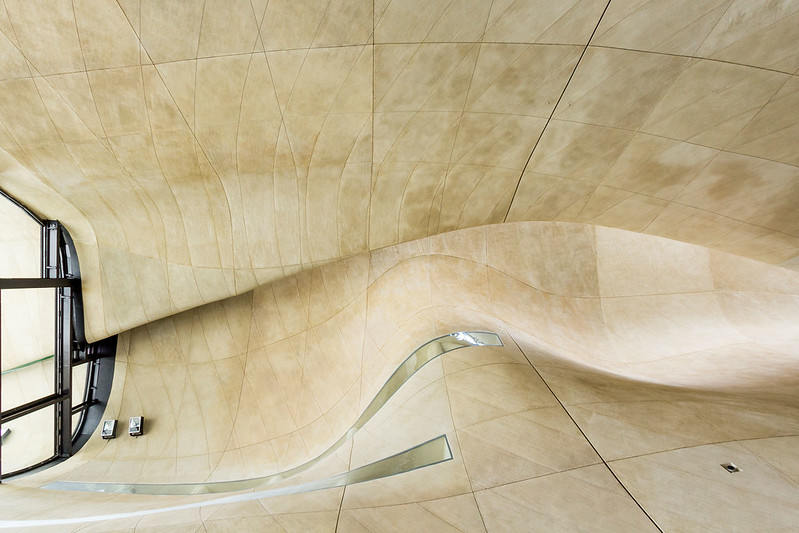Wednesday, 2 September 2015
Model Minimalist Simple
Modern Minimalist House photo
Minimalist Luxury Homes
Prefabricated house models Latest
Sketch minimalist design stages
Know the Toraja traditional house Architectural Design
Unique Home Design Ethnic Nuance
Model Design minimalist Simple Plan Type 36
Tiny House Design Modern And Simple
Various Kinds of Pictures Luxury Homes
Saturday, 15 August 2015
REX Honcho in Esquire
Most of the posts in my ongoing "architecture advertising" series focus on architects and/or buildings used in print ads, commercials, and other forms of advertising. As most people probably know, often advertising takes less obtrusive means, such as being embedded into editorial content. The most obvious means of this is the fashion spread, which is a magazine's way of saying "this is the way men or women should dress," but which is really advertising for the clothes being worn. In the latest Esquire, the "Epic" September Style Issue (subtitled "How to Dress Now") an architect makes an appearance on page 174 (of 190):

I'll admit it's pretty cool to find Joshua Prince-Ramus in the issue. He might not be the most obvious choice (BIG's Bjarke Ingels would make sense, though for all I know he's already done it), but his shaved head and cool determination work well. Heck, I'd buy those clothes. Wait – that outfit costs $16,175! Never mind.

I'll admit it's pretty cool to find Joshua Prince-Ramus in the issue. He might not be the most obvious choice (BIG's Bjarke Ingels would make sense, though for all I know he's already done it), but his shaved head and cool determination work well. Heck, I'd buy those clothes. Wait – that outfit costs $16,175! Never mind.
Friday, 14 August 2015
Book Briefs #23
"Book Briefs" are an ongoing series of posts with two- or three-sentence first-hand descriptions of some of the numerous books that make their way into my library. These briefs are not full-blown reviews, but they are a way to share more books worthy of attention than can find their way into reviews on my daily or weekly pages.



2013 Competitions Annual edited by G. Stanley Collyer with Daniel Madryga | The Competition Project | 2014
This collection of the winners and runners up of fifteen architectural competitions – similar in format to the 2012 Competitions Annual – is framed by two themes, one on the back cover and one in the introduction: the increased role of landscape architects in competitions and large-scale architecture in general, and the need for better-designed affordable housing which eschews the misconceptions that arose from the (sometimes literal) implosion of public housing since the 1970s. Not all of the projects found within the book correspond to these themes, but there is more to be found that relates to landscape architecture than housing. Many of the projects are, not surprisingly, cultural and institutional, but there are a number of large-scale campus and infrastructure projects that are often led by landscape architects. Setting themes among the assembled competitions aside, this book, like the 2012 edition, benefits from editorial commentary, jury comments, and the inclusion of runners up and winners in one place. It is not an exhaustive collection of competitions from the calendar year 2013, but it is a strong collection that students and young architects in particular will benefit greatly from, given the impressive renderings and drawings found throughout.
Out of Scale: AIA Small Projects Awards edited by Marc Manack and Linda Reeder | ORO Editions | 2015 | Amazon
There is much to praise the AIA Small Project Awards Program: it gives young architects and small firms a chance at recognition, what they might not receive in the other awards categories; it recognizes the importance of small buildings, structures and spaces, not just big gestures; it recognizes that innovation often occurs at the small scale; and, to be honest, many of the winning projects are just more interesting than the larger buildings that win those other awards. With this in mind, and with the AIA Small Project Awards Program ten years old, now is a great time to have a book highlighting the winners. Yet this is hardly a straightforward presentation of the winners. The projects are presented chronologically in four chapters – Pavilions & Installations, Adaptive Reuse & Interiors, Houses, Details – yet some of them feature in more than one chapter; a year-by-year index on each project points to where it is in the book. Further, between each chapter are jury comments and loads of statistics that try to find common ground among the projects. The comments are fine, but I could have used without the statistics, instead giving more pages to the projects, which are documented primarily through small photos.
Road Trip: Roadside America, From Custard's Last Stand to the Wigwam Restaurant by Richard Longstreth | Universe | 2015 | Amazon
This isn't the type of book I'd normally review on my blog, but I'm a sucker for guidebooks focused on buildings, capital A architecture or not. As the name indicates this book is about vernacular roadside architecture in the United States, predominantly buildings and structures that were built between 1920 and the late 1960s; after that, the Interstate Highway System changed the landscape of roadside architecture into something more corporate and less idiosyncratic. The chapters illustrate just what was built in those decades: commercial strips, restaurants, gas stations, motels, stores, theaters, and "other places of entertainment." Each of these chapters has an introduction on the respective typology, followed by Longstreth's photographs with captions that indicate the what, where, and when. Most photos were taken in the 1970s, making Roadside America a visual history and remembrance of places under-appreciated in their time.



2013 Competitions Annual edited by G. Stanley Collyer with Daniel Madryga | The Competition Project | 2014
This collection of the winners and runners up of fifteen architectural competitions – similar in format to the 2012 Competitions Annual – is framed by two themes, one on the back cover and one in the introduction: the increased role of landscape architects in competitions and large-scale architecture in general, and the need for better-designed affordable housing which eschews the misconceptions that arose from the (sometimes literal) implosion of public housing since the 1970s. Not all of the projects found within the book correspond to these themes, but there is more to be found that relates to landscape architecture than housing. Many of the projects are, not surprisingly, cultural and institutional, but there are a number of large-scale campus and infrastructure projects that are often led by landscape architects. Setting themes among the assembled competitions aside, this book, like the 2012 edition, benefits from editorial commentary, jury comments, and the inclusion of runners up and winners in one place. It is not an exhaustive collection of competitions from the calendar year 2013, but it is a strong collection that students and young architects in particular will benefit greatly from, given the impressive renderings and drawings found throughout.
Out of Scale: AIA Small Projects Awards edited by Marc Manack and Linda Reeder | ORO Editions | 2015 | Amazon
There is much to praise the AIA Small Project Awards Program: it gives young architects and small firms a chance at recognition, what they might not receive in the other awards categories; it recognizes the importance of small buildings, structures and spaces, not just big gestures; it recognizes that innovation often occurs at the small scale; and, to be honest, many of the winning projects are just more interesting than the larger buildings that win those other awards. With this in mind, and with the AIA Small Project Awards Program ten years old, now is a great time to have a book highlighting the winners. Yet this is hardly a straightforward presentation of the winners. The projects are presented chronologically in four chapters – Pavilions & Installations, Adaptive Reuse & Interiors, Houses, Details – yet some of them feature in more than one chapter; a year-by-year index on each project points to where it is in the book. Further, between each chapter are jury comments and loads of statistics that try to find common ground among the projects. The comments are fine, but I could have used without the statistics, instead giving more pages to the projects, which are documented primarily through small photos.
Road Trip: Roadside America, From Custard's Last Stand to the Wigwam Restaurant by Richard Longstreth | Universe | 2015 | Amazon
This isn't the type of book I'd normally review on my blog, but I'm a sucker for guidebooks focused on buildings, capital A architecture or not. As the name indicates this book is about vernacular roadside architecture in the United States, predominantly buildings and structures that were built between 1920 and the late 1960s; after that, the Interstate Highway System changed the landscape of roadside architecture into something more corporate and less idiosyncratic. The chapters illustrate just what was built in those decades: commercial strips, restaurants, gas stations, motels, stores, theaters, and "other places of entertainment." Each of these chapters has an introduction on the respective typology, followed by Longstreth's photographs with captions that indicate the what, where, and when. Most photos were taken in the 1970s, making Roadside America a visual history and remembrance of places under-appreciated in their time.
Thursday, 13 August 2015
Measure
Measure opens tonight (running until September 12) at the Storefront for Art and Architecture.
It will be worth going just to see this drawing by James Wines on the measurable and immeasurable impact of the Storefront:

Participants include:
The Architecture Lobby
Barozzi / Veiga
Víctor Enrich
Fake Industries Architectural Agonism (Urtzi Grau, Cristina Goberna) and Georgia Jamieson
FIG Projects
FleaFollyArchitects
Formlessfinder
Michelle Fornabai
Grimshaw Architects
Steven Holl
Bernard Khoury
Kohn Pedersen Fox Assoc.
KUTONOTUK (Matthew Jull + Leena Cho)
Erika Loana
Jon Lott / PARA Project
MAIO
m-a-u-s-e-r (Mona Mahall + Asli Serbest)
MILLIØNS (John May + Zeina Koreitem)
Nicholas de Monchaux
Anna Neimark and Andrew Atwood / First Office
pneumastudio (Cathryn Dwyre + Chris Perry)
+ POOL
James Ramsey, RAAD Studio
Reiser + Umemoto
Mark Robbins
Selldorf Architects
Malkit Shoshan
Nader Tehrani / NADAAA
Urban-Think Tank
Anthony Titus
Ross Wimer
James Wines
It will be worth going just to see this drawing by James Wines on the measurable and immeasurable impact of the Storefront:

Participants include:
The Architecture Lobby
Barozzi / Veiga
Víctor Enrich
Fake Industries Architectural Agonism (Urtzi Grau, Cristina Goberna) and Georgia Jamieson
FIG Projects
FleaFollyArchitects
Formlessfinder
Michelle Fornabai
Grimshaw Architects
Steven Holl
Bernard Khoury
Kohn Pedersen Fox Assoc.
KUTONOTUK (Matthew Jull + Leena Cho)
Erika Loana
Jon Lott / PARA Project
MAIO
m-a-u-s-e-r (Mona Mahall + Asli Serbest)
MILLIØNS (John May + Zeina Koreitem)
Nicholas de Monchaux
Anna Neimark and Andrew Atwood / First Office
pneumastudio (Cathryn Dwyre + Chris Perry)
+ POOL
James Ramsey, RAAD Studio
Reiser + Umemoto
Mark Robbins
Selldorf Architects
Malkit Shoshan
Nader Tehrani / NADAAA
Urban-Think Tank
Anthony Titus
Ross Wimer
James Wines
Wednesday, 12 August 2015
Today's archidose #856
Here are some photos of the Public Toilets (2011) in Uster, Switzerland, by Gramazio Kohler Architects, photographed by Ken Lee.




To contribute your Flickr images for consideration, just:




To contribute your Flickr images for consideration, just:
:: Join and add photos to the archidose poolTo contribute your Instagram images for consideration, just:
:: Tag your photos #archidose
Monday, 10 August 2015
A Return to the Parrish Art Museum
At the end of 2012 I visited the Parrish Art Museum shortly after the grand opening of the Long Island institution's Herzog & de Meuron building, writing a weekly dose on it in early 2013. Over the weekend I finally returned, specifically to see the Tara Donovan Slinky sculptures. Those sculptures were decent, kind of worth the trip, but I was more impressed by how in just a over a couple years the building has integrated itself into the landscapes designed by Reed Hilderbrand Associates. So below are a few 2012/2015 photos comparisons (keep in mind that the views are not exact matches, but they are fairly close).
Southern roadside elevation in 2012:

Southern roadside elevation (with Roy Lichtenstein sculptures) in 2015:

Left is bioswale at parking lot in 2012 and right is bioswale in 2015:


Approach to the museum from parking on the north in 2012:

Approach to the museum from parking on the north in 2015:

North elevation in 2012:

North elevation in 2015:

The southern elevation in 2012:

The southern elevation in 2015:

Southern roadside elevation in 2012:

Southern roadside elevation (with Roy Lichtenstein sculptures) in 2015:

Left is bioswale at parking lot in 2012 and right is bioswale in 2015:


Approach to the museum from parking on the north in 2012:

Approach to the museum from parking on the north in 2015:

North elevation in 2012:

North elevation in 2015:

The southern elevation in 2012:

The southern elevation in 2015:

Today's archidose #855
Here are some photos of the Philharmonic Hall (2014) in Szczecin, Poland, by Estudio Barozzi Veiga, photographed by Maciek Lulko. The building won the 2015 Mies van der Rohe Award, European Union Prize for Contemporary Architecture.




To contribute your Flickr images for consideration, just:




To contribute your Flickr images for consideration, just:
:: Join and add photos to the archidose poolTo contribute your Instagram images for consideration, just:
:: Tag your photos #archidose
Wednesday, 5 August 2015
Today's archidose #854
Here are some photos of POLIN Museum of the History of Polish Jews (2013) in Warsaw, Poland, by Lahdelma & Mahlamäki Architects, photographed by Ziemowit Cabanek.








To contribute your Flickr images for consideration, just:








To contribute your Flickr images for consideration, just:
:: Join and add photos to the archidose poolTo contribute your Instagram images for consideration, just:
:: Tag your photos #archidose
Monday, 3 August 2015
AIA Chicago's Lifetime Achievement Awards
Today AIA Chicago announced that Richard H. Driehaus is the recipient of the 2015 Lifetime Achievement Award. While I'm not too excited about one of the driving forces of neoclassical architecture getting an award from an AIA chapter in one of the most modern American cities (where Driehaus and his foundation resides), the award made me curious about the previous recipients. How does he compare to others? Although I immediately recall that Stanley Tigerman and John Vinci recently receiving the honor, it's surprising just how difficult it is to find a list of AIA Chicago's Lifetime Achievement Awards, which started in 2006. Basically AIA Chicago doesn't have one. So I did a little digging and put the list of winners from this and past years below (hopefully I got them all correct). Videos about the winners are supplied when available.
2015: Richard H. Driehaus

2014: John Vinci
2013: Stanley Tigerman
2012: Helmut Jahn
2011: Ben Weese
2010: Natalie de Blois
2009: Daniel Burnham and Edward Bennett (jointly and posthumously on the 100th anniversary of their Plan of Chicago)
2008: Gertude Lempp Kerbis
2007: John A. Holabird Jr.
2006: Walter Netsch
2015: Richard H. Driehaus

2014: John Vinci
2013: Stanley Tigerman
2012: Helmut Jahn
2011: Ben Weese
2010: Natalie de Blois
2009: Daniel Burnham and Edward Bennett (jointly and posthumously on the 100th anniversary of their Plan of Chicago)
2008: Gertude Lempp Kerbis
2007: John A. Holabird Jr.
2006: Walter Netsch
Friday, 31 July 2015
Today's archidose #853
Here are some photos of Quinta de Lemos in Viseu, Portugal, by Carvalho Araújo Arquitectos, photographed by José Carlos Melo Dias.









To contribute your Flickr images for consideration, just:









To contribute your Flickr images for consideration, just:
:: Join and add photos to the archidose poolTo contribute your Instagram images for consideration, just:
:: Tag your photos #archidose













